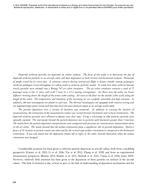
Deposition of Dispersed Airborne Particles on Surface in an Indoor Environment
- Comments Off on Deposition of Dispersed Airborne Particles on Surface in an Indoor Environment
- ASHRAE
Dispersed airborne particles are deposited on indoor surfaces. The focus of this study is to determine the fate of dispersed airborne particles in an aircraft cabin and their deposition on both vertical and horizontal surfaces. Thousands of people travel by air every day. A common concern during commercial flight is disease transfer among passengers. Airborne pathogens travel throughout air cabins much as airborne particles would. To study how these airborne diseases travel, particles were released into a Boeing 747 air cabin simulator. The air cabin simulator contains a total of 77 passenger seats; it has 11 rows, each with 7 seats in a 2-3-2 seating arrangement. Air flows into the cabin via linear diffusors running down the length of the center cabin ceiling. Air exits at the floor on the outside cabin walls along the length of the cabin. The temperature and humidity of the incoming air are carefully controlled and kept constant. In addition, thermal mannequins are placed in each seat. The thermal mannequins are equipped with resistive wiring and are supplied proper power levels such that they have the same thermal output as an average seated adult.
The particle deposition over a variety of locations was measured. In addition to varying the location of measurements, the orientation of the measurement surface was varied between horizontal and vertical orientations. The dispersed airborne particles were allowed to deposit onto clear tape. Using a microscope to take pictures, particles were optically counted. The microscope limited the particle detection size to particles with diameters greater than 3 microns. The results from the particle deposition measurements were compared with previous air concentration measurements done in the air cabin. The results showed that the surface orientation plays a significant role in particle deposition. Nearly a factor of 10 increase in particle counts was observed for the vertical tape surface orientation as compared to the horizontal orientation. It was also found that the deposition trends, left to right, in the cabin reversed themselves when the surface orientation was changed.
Citation: First International Conference on Energy and Indoor Environment for Hot Climates, Doha, Qatar, February 2014
Product Details
- Published:
- 2014
- Number of Pages:
- 11
- File Size:
- 1 file , 520 KB
- Product Code(s):
- D-2014FICEConf-16-2

